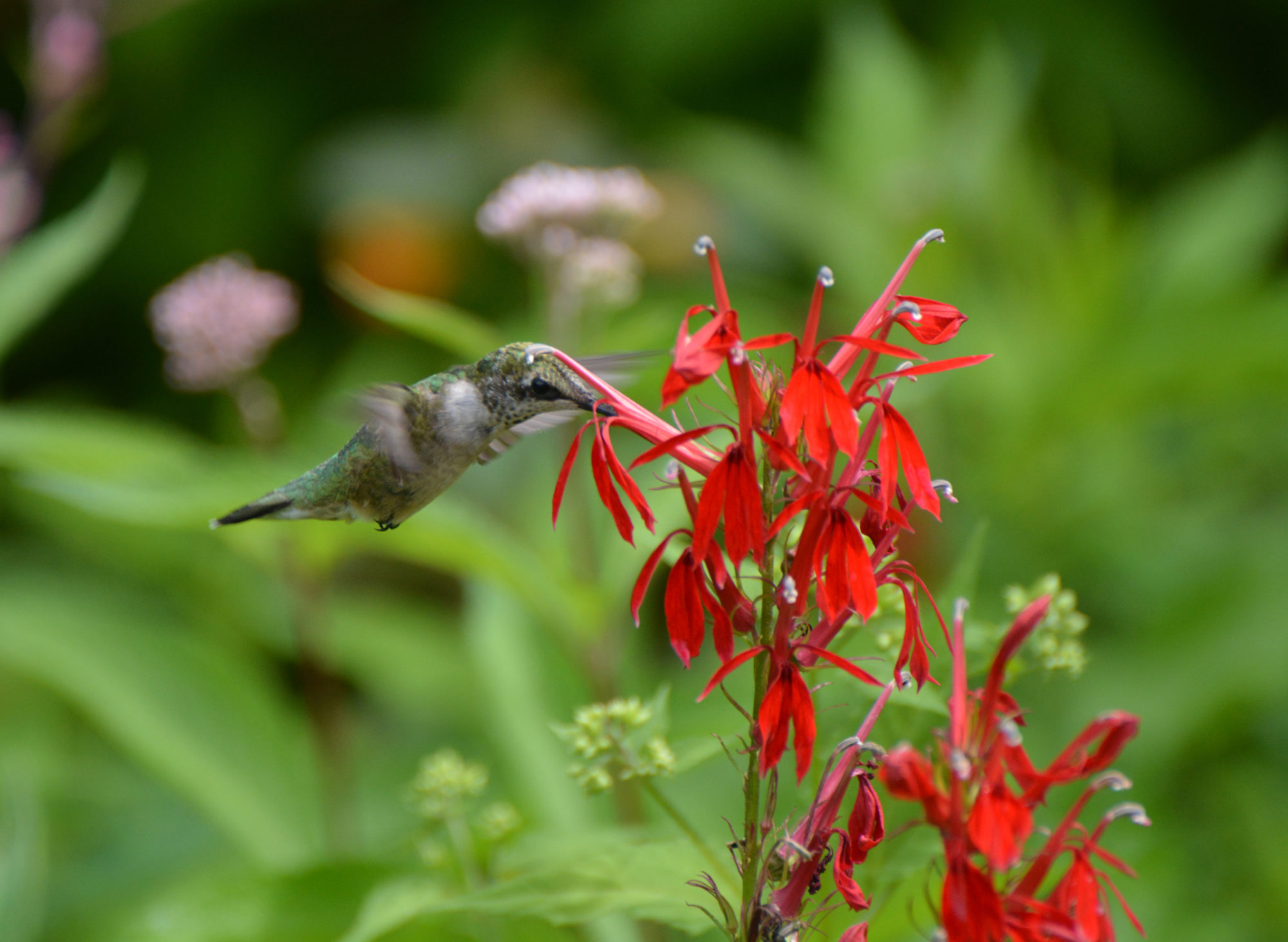General information about birds and their conservation
Plants for birds
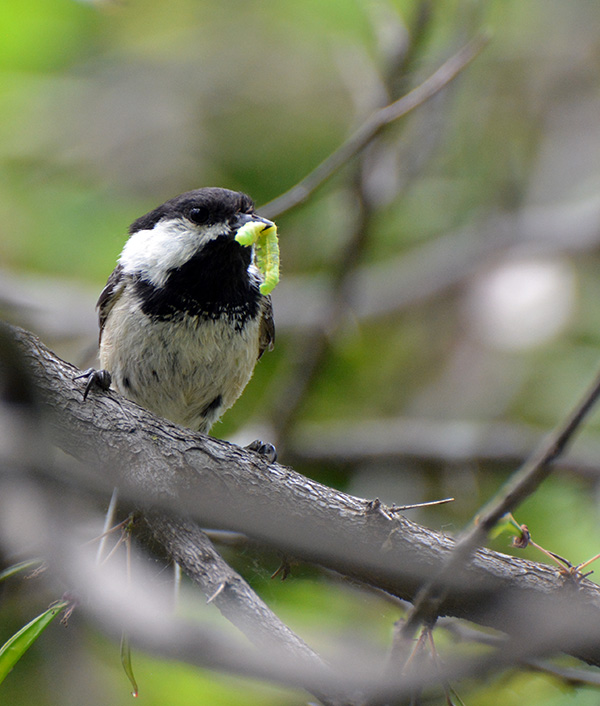
As part of our “Bird-friendly Plants of the Year” project, HGCNY and Onondaga Audubon created a “Birdy Dozen” list of native plants for a number of years, which was then added to the previous years’ lists.
Below are the plants we selected for each year. The initial lists featured more herbaceous plants than woodies, but eventually — when we could give growers enough advance notice — we intended to include more woody shrubs and trees, which are so important for birds.
Keystone “Powerhouse” plants
After 2021, we now endorse the list of Keystone plants for the Eastern Temperate Forest (Ecoregion 8) created by Doug Tallamy and the National Wildlife Federation. These are the plants that support the most insects — and therefore the most birds!
More specifically, our CNY Ecoregion is the Mixed Wood Plains (Ecoregion 8.1)
(NOTE: So far, this more specific list is limited to trees and shrubs.)
Information on plants
We recommend planting plain species rather than cultivars or hybrids. Learn more about plain species vs. cultivars/hybrids.
Note that many plants have multiple common names. Common names may also apply to different plants. Good reasons for learning the scientific names so you are getting the plant you intend to get! Learn more about common vs. scientific names.
And Wild Ones is a partner in the 2/3 for the Birds project! For every three plants you plant, make two of them native. Even better, make sure they’re native Keystone plants. Please sign up!
What does “dioecious” mean?
Why do we list “dioecious” plants separately in the lists below?
Most plants are “monoecious,” having both male and female parts on the same individual plant. “Dioecious” plants, though, have these parts on separate male and female plants, so a male plant is required to pollinate female plants to produce berries. The male must be located generally within about 100 feet or less. It’s generally not possible to determine whether an individual plant is male or female as a seedling tree or shrub, which is how we offer them. One solution is to buy a few more plants and remove extra male plants when they mature.
Note, however, the leaves of both males and females support butterfly and moth caterpillars.
2020 Birdy Dozen
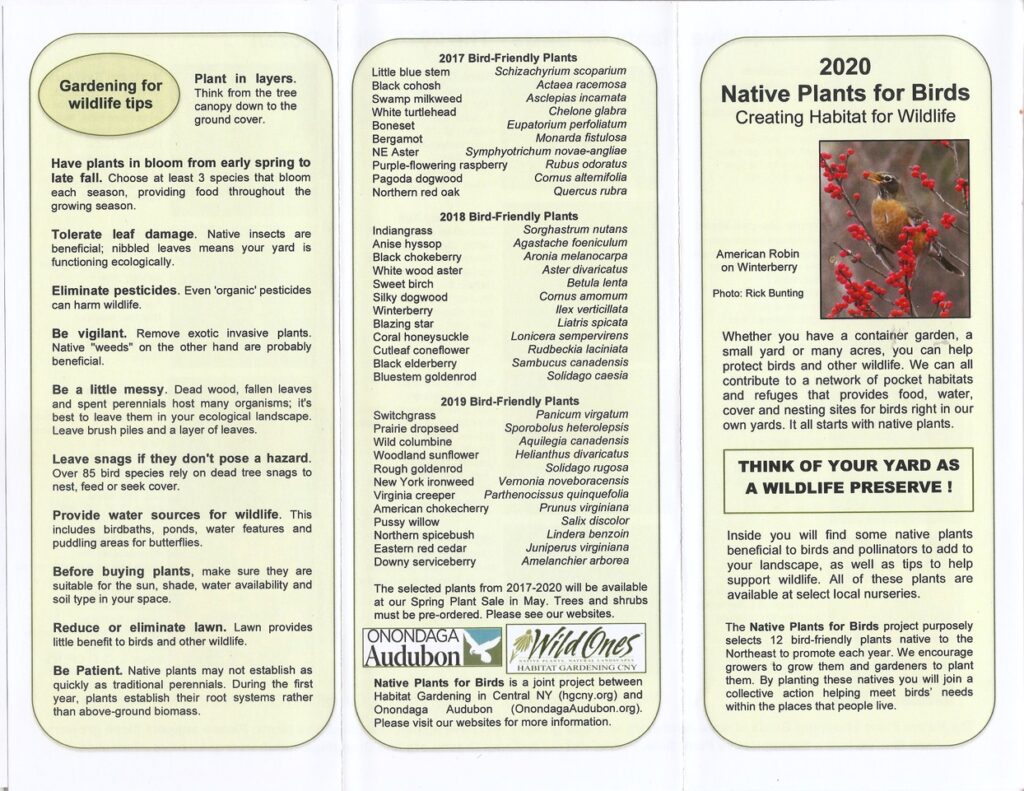

2019 Birdy Dozen
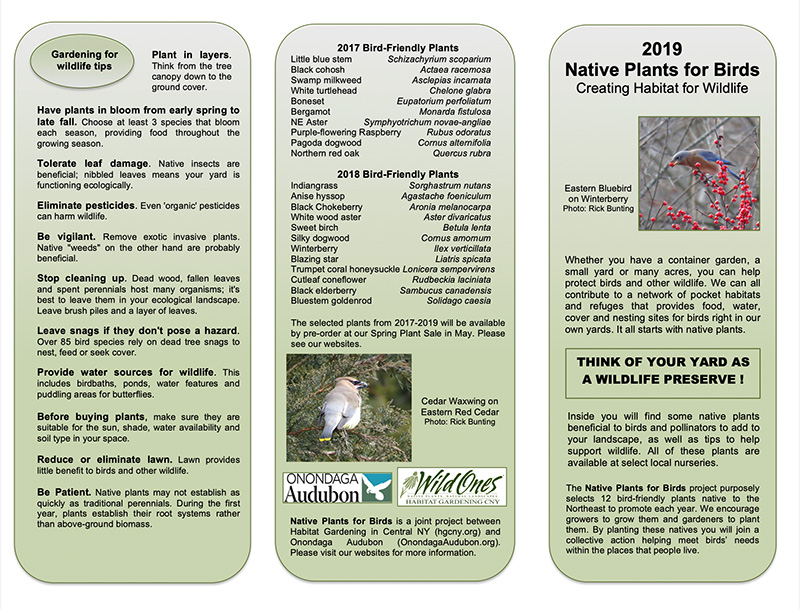
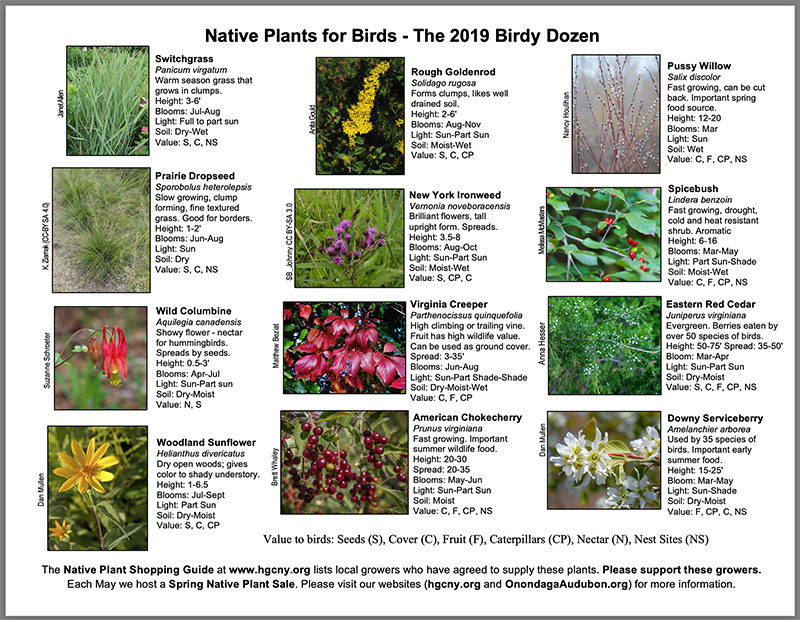
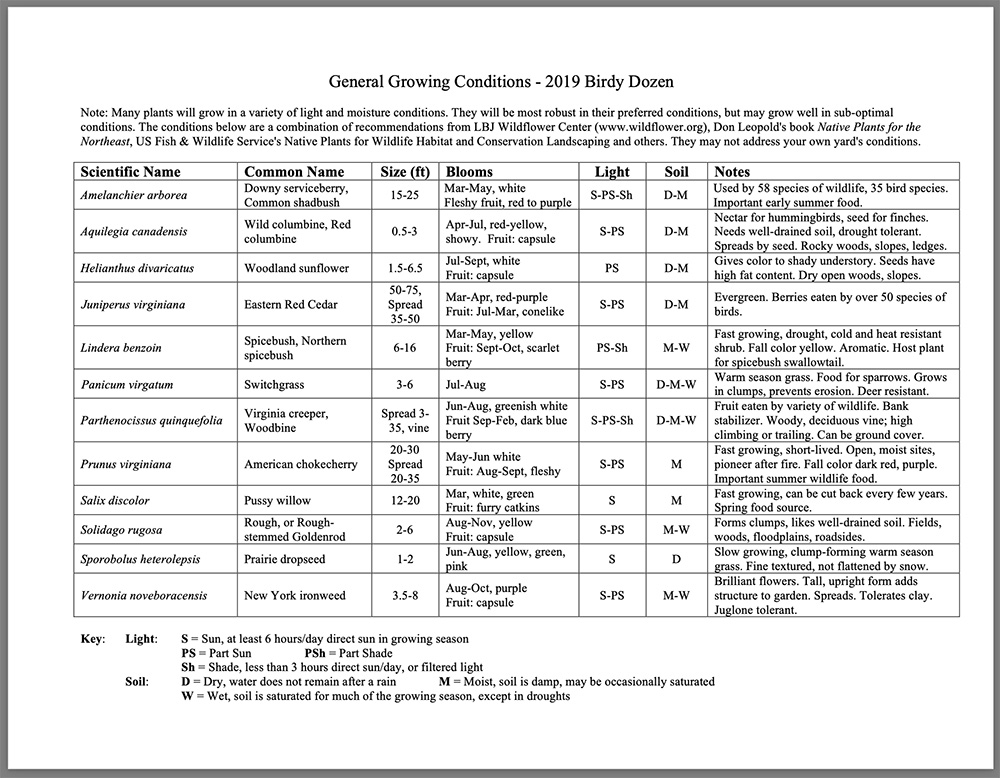
2018 Birdy Dozen
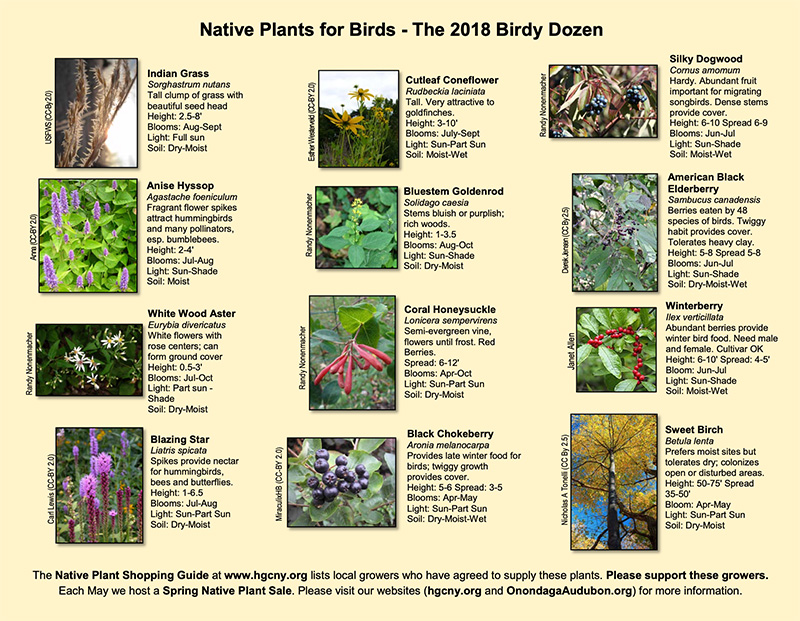
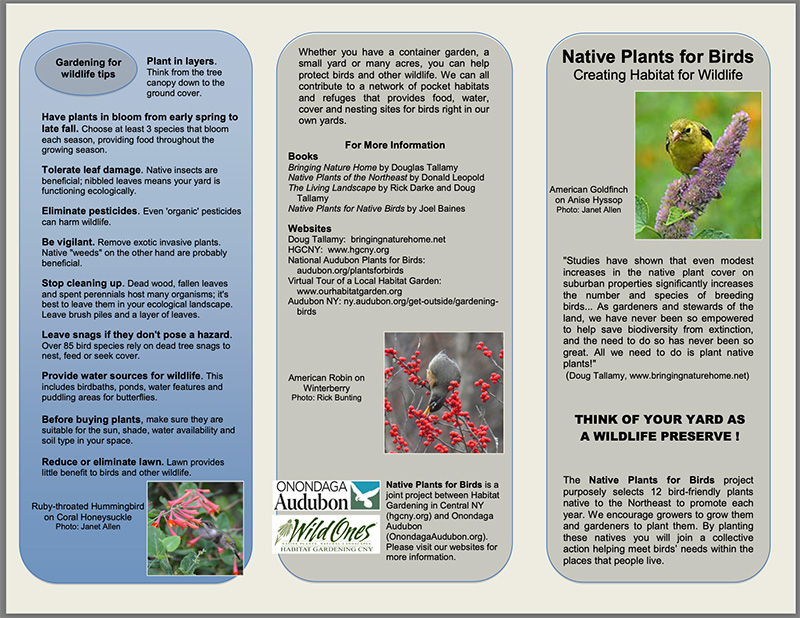
2017 Birdy Dozen
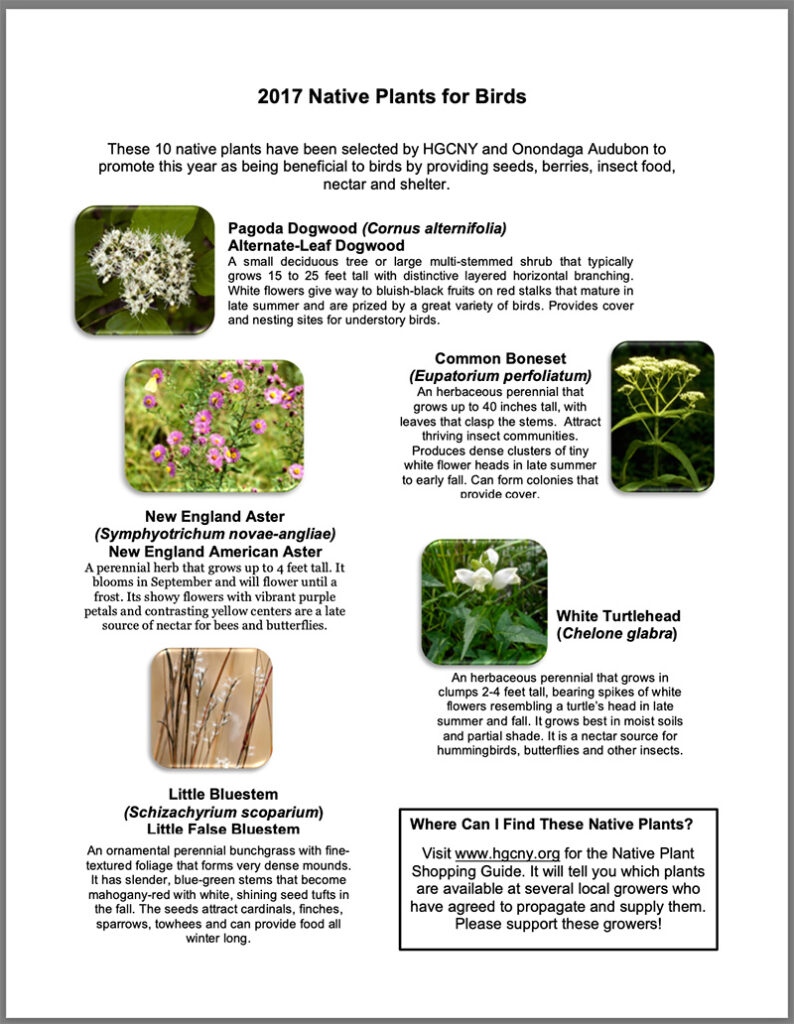
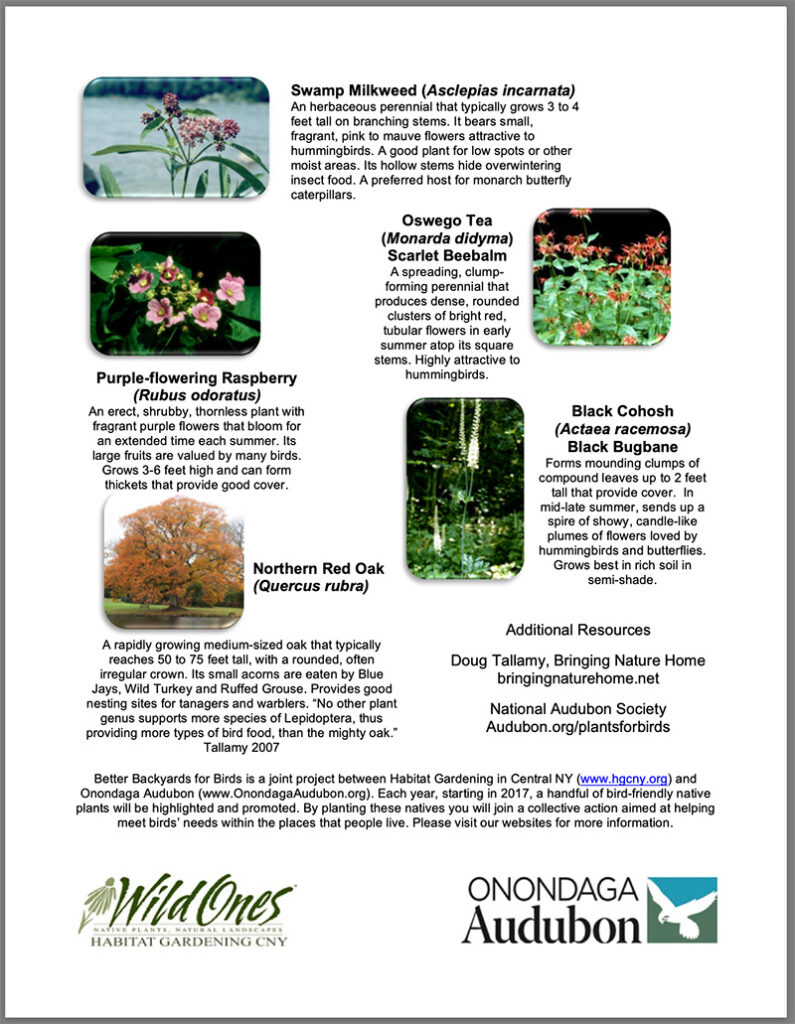
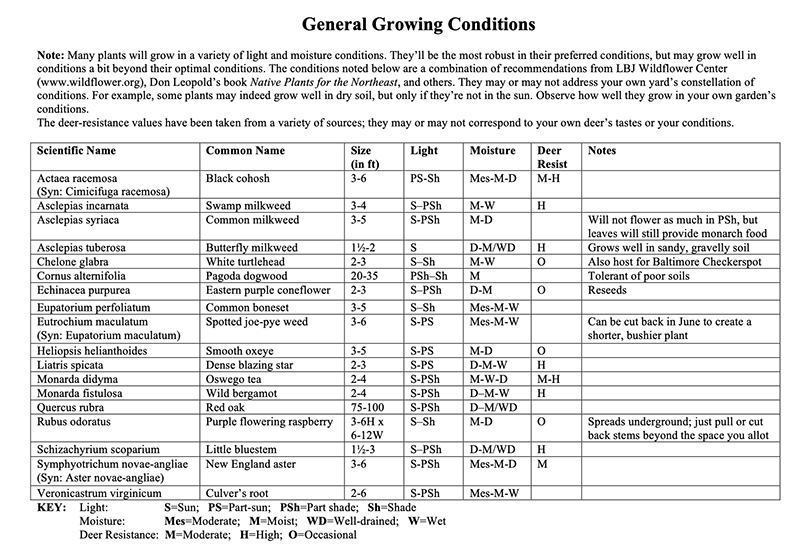
Summary of 2017-2021 lists
Grasses (2017-2021)
- Andropogon gerardii – Big Bluestem
- Carex pensylvanica – Pennsylvania sedge
- Panicum virgatum – Switch grass
- Schizachyrium scoparium – Little bluestem
- Sorghastrum nutans – Indian grass
- Sporobolus heterolepsis – Prairie dropseed
Herbaceous (2017-2021)
- Actaea racemosa (Syn. Cimicifuga racemosa) – Black cohosh
- Agastache foeniculum – Anise hyssop, Blue giant hyssop
- Aquilegia canadensis – Wild columbine, Red columbine
- Asclepias incarnata – Swamp milkweed
- Aster divaricatus (Syn: Eurybia divaricata) – White wood aster
- Chelone glabra – White turtlehead
- Echinacea purpurea – Purple coneflower
- Eupatorium perfoliatum – Common boneset
- Eutrochium purpureum (Syn. Eupatorium purpureum) – Purple joe-pye
- Helianthus divaricatus – Woodland sunflower
- Helianthus maximiliani – Maximilian sunflower
- Liatris spicata – Blazing star, Gayfeather
- Lobelia cardinalis – Cardinal flower; Cardinal lobelia
- Monarda didyma – Oswego tea
- Monarda fistulosa – Bergamot
- Rudbeckia laciniata – Cutleaf coneflower, Green-head coneflower, Tall coneflower
- Senna hebecarpa – Wild senna
- Solidago caesia – Bluestem goldenrod, Wreath goldenrod
- Solidago flexicaulis – Zigzag goldenrod
- Solidago rugosa – Rough goldenrod, Rough-stemmed goldenrod, Wrinkle-leaf goldenrod
- Symphyotrichum novae-angliae (Syn: Aster novae-angliae) – New England aster
- Vernonia noveboracensis – New York ironweed
Vines (2017-2021)
- Campsis radicans – Trumpet vine, Trumpet creeper
- Lonicera sempervirens – Coral honeysuckle, Honeysuckle vine, Trumpet honeysuckle
- Parthenocissus quinquefolia – Virginia creeper, Woodbine
Shrubs (2017-2021)
- Alnus serrulata – Black alder, Smooth or common alder
- Aronia arbutifolia – Red chokeberryCeanothus americanus – New Jersey tea
- Cornus sericea (C. stolonifera) – Red osier dogwood
- Corylus americana – American hazelnut
- Rhus aromatica – Fragrant sumac; Aromatic sumac
- Vaccinium corymbosum – Highbush blueberry
- Aronia melanocarpa (Syn: Photinia melanocarpa, Pyrus melanocarpa) – Black chokeberry
- Cornus amomum – Silky dogwood
- Prunus virginiana – American chokecherry, Chokecherry
- Rubus odoratus – Purple flowering raspberry
- Sambucus canadensis (Syn: Sambucus nigra ssp. canadensis) – American black elderberry, Common elder
Dioecious shrubs (2017-2021)
- Ilex verticillata – Winterberry, Common winterberry
- Lindera benzoin – Spicebush
- Morella pensylvanica (Syn: Myrica pensylvanica) – Northern bayberry
- Salix discolor – Pussy willow
Deciduous trees (2017-2021)
- Acer rubrum – Red maple
- Acer saccharum – Sugar maple
- Amelanchier arborea – Downy serviceberry, Common shadbush
- Betula lenta – Sweet birch, Black birch
- Cornus alternifolia – Pagoda dogwood
- Prunus pensylvanica – Pin cherry
- Prunus serotina – Black cherry
- Quercus palustris – Pin oak
- Quercus rubra – Red oak
Evergreen trees (2017-2021)
- Juniperus virginiana – Eastern red cedar
- Pinus strobus – White pine
